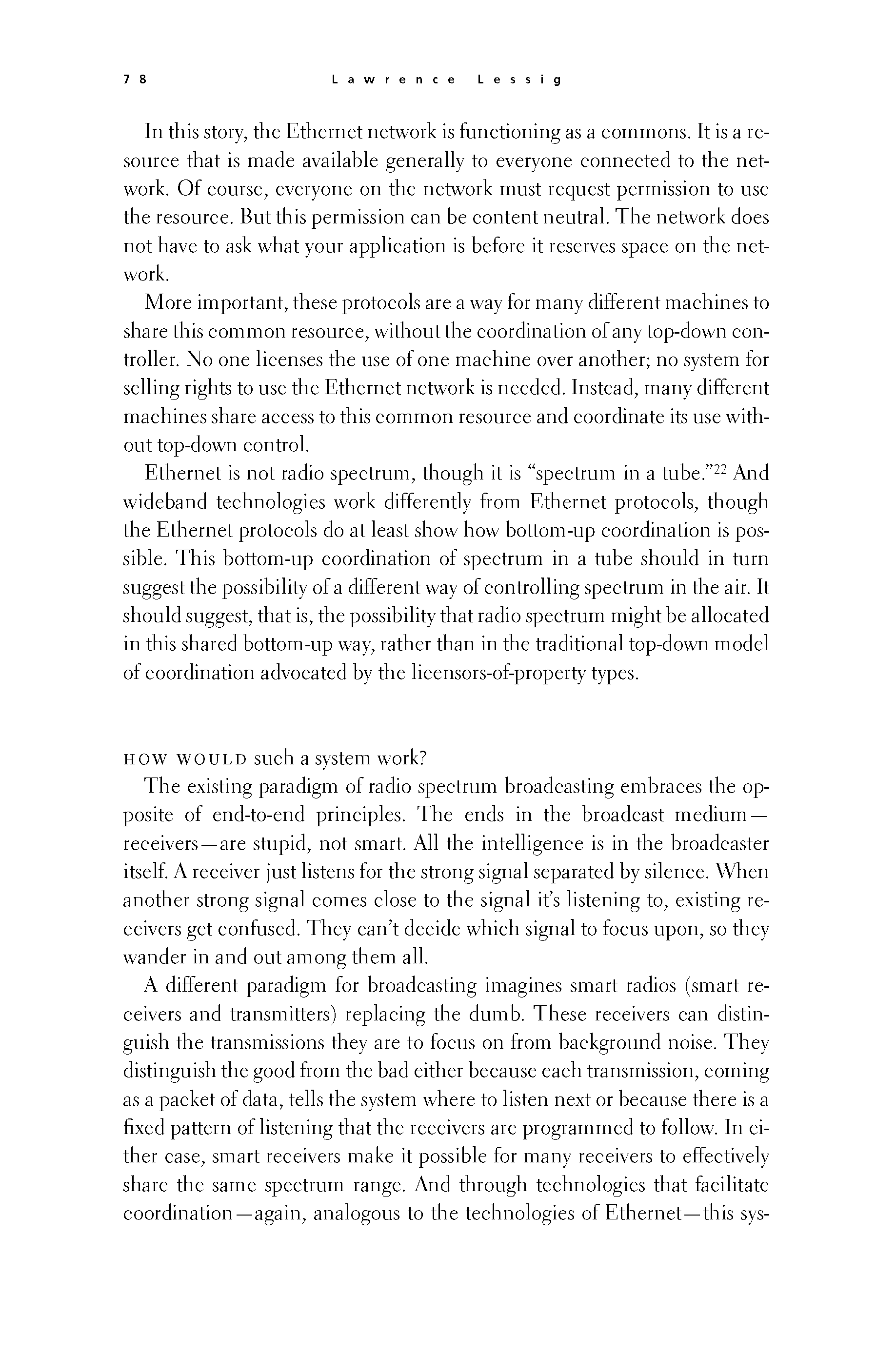 p077 _
-chap- _
toc-1 _
p078w _
toc-2 _
+chap+ _
p079
p077 _
-chap- _
toc-1 _
p078w _
toc-2 _
+chap+ _
p079
In this story, the Ethernet network is functioning as a commons. It is a re-
source that is made available generally to everyone connected to the net-
work. Of course, everyone on the network must request permission to use
the resource. But this permission can be content neutral. The network does
not have to ask what your application is before it reserves space on the net-
work.
More important, these protocols are a way for many different machines to
share this common resource, without the coordination of any top-down con-
troller. No one licenses the use of one machine over another; no system for
selling rights to use the Ethernet network is needed. Instead, many different
machines share access to this common resource and coordinate its use with-
out top-down control.
Ethernet is not radio spectrum, though it is "spectrum in a tube."[5-22] And
wideband technologies work differently from Ethernet protocols, though
the Ethernet protocols do at least show how bottom-up coordination is pos-
sible. This bottom-up coordination of spectrum in a tube should in turn
suggest the possibility of a different way of controlling spectrum in the air. It
should suggest, that is, the possibility that radio spectrum might be allocated
in this shared bottom-up way, rather than in the traditional top-down model
of coordination advocated by the licensors-of-property types.
///\\\
How would such a system work?
The existing paradigm of radio spectrum broadcasting embraces the op-
posite of end-to-end principles. The ends in the broadcast medium --
receivers -- are stupid, not smart. All the intelligence is in the broadcaster
itself. A receiver just listens for the strong signal separated by silence. When
another strong signal comes close to the signal it's listening to, existing re-
ceivers get confused. They can't decide which signal to focus upon, so they
wander in and out among them all.
A different paradigm for broadcasting imagines smart radios (smart re-
ceivers and transmitters) replacing the dumb. These receivers can distin-
guish the transmissions they are to focus on from background noise. They
distinguish the good from the bad either because each transmission, coming
as a packet of data, tells the system where to listen next or because there is a
fixed pattern of listening that the receivers are programmed to follow. In ei-
ther case, smart receivers make it possible for many receivers to effectively
share the same spectrum range. And through technologies that facilitate
coordination -- again, analogous to the technologies of Ethernet -- this sys-
[[78]]
p077 _
-chap- _
toc-1 _
p078w _
toc-2 _
+chap+ _
p079